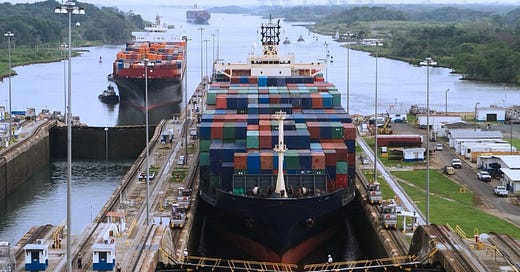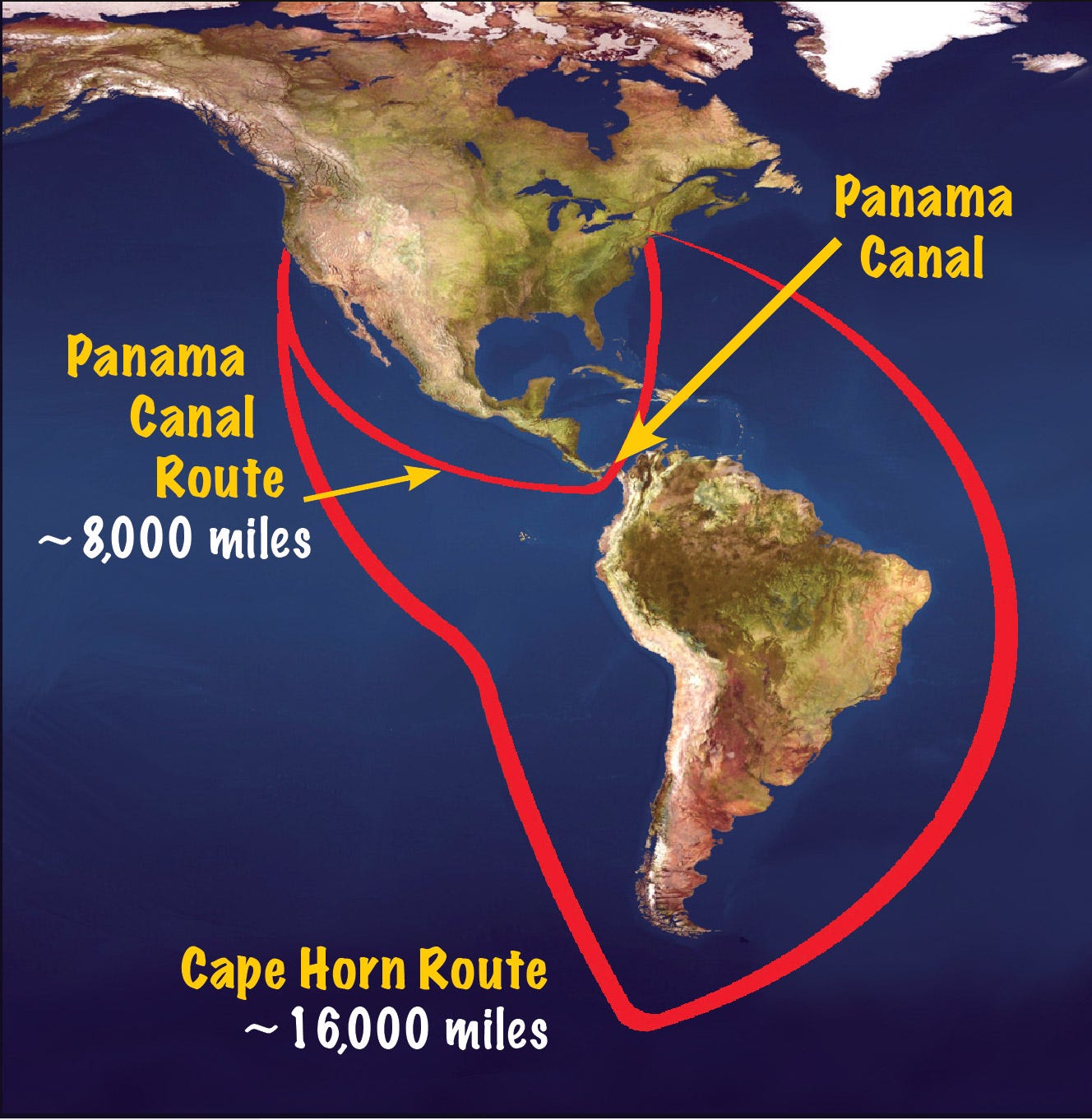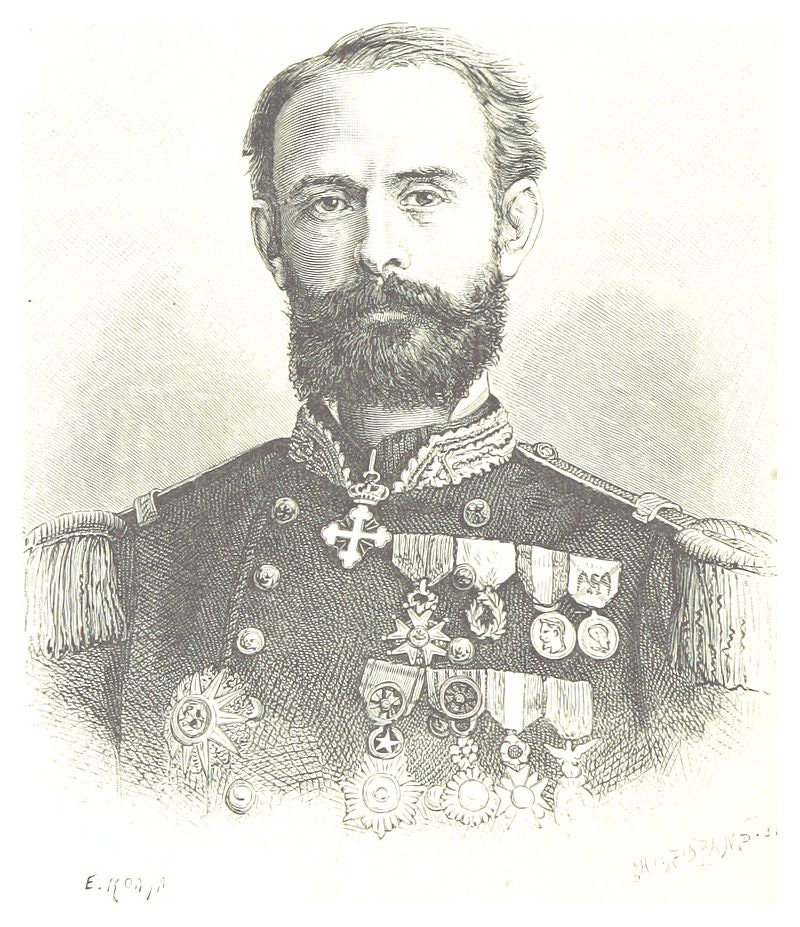Incoming President Donald Trump made the mainstream media go apoplectic earlier this month, when he did not publicly rule out the use of military force to take back the Panama Canal.
In recent weeks, Trump has flirted with the idea of annexing Greenland and retaking Panama on the grounds of national security concerns. During a press briefing at his Mar-a-Lago residence in Florida, a reporter asked Trump if he would categorically discard the idea of using military force against Greenland and Panama, to which Trump responded, “No, I can’t assure you on either of those two, but I can say this, we need them for economic security.
Many pundits scoffed at Trump’s remarks about bringing the Panama Canal back into the United States’s fold. While it’s easy to poke fun at Trump's bombastic commentary, there’s a kernel of substance to his desire to bring the Panama Canal back into the US’ orbit.
For starters, Trump believes Panama is charging US vessels “exorbitant prices,” and warned that if these prices are not lowered in a timely manner, he will demand that the US be granted the power to reassert its control of the canal. Additionally, there have been perennial fears of an emerging China making a play to take the canal for itself.
To truly appreciate the Panama Canal’s importance in US security policy, one must take a trip down memory lane.
The Historical Backdrop of the Panama Canal
In the late 1870s, the Geographical Society of Paris set up a committee to study the viability of building an interoceanic canal in Central America. Before that, sea traffic from either Europe or America’s West Coast had to go around Cape Horn at southern tip of South America, “a voyage that was some 8,000 nautical miles longer than going through the canal and that took about two months to complete.”
After successfully building the Suez Canal in Egypt in 1869, French diplomat Ferdinand de Lesseps was selected to head Compagnie Universelle du Canal Interocéanique de Panama (the French Panama Canal Company).
French Navy office Lucien Bonaparte-Wyse would then be tasked with exploring the Panamanian isthmus.
After several years of exploration and diplomatic negotiations with the authorities in Colombia, of which Panama was a part of at the time, Wyse successfully negotiated a treaty in 1878—the Wyse Concession.
This treaty granted the French Panama Canal Company exclusive rights to construct an interoceanic canal through Panama. The Colombian government would eventually take control of the canal after 99 years passed, without receiving any compensation.
The first phase of construction of the French-sponsored canal project began in 1881. However, the French canal venture faced many roadblocks from the outset. De Lesseps thought he could replicate his success with the Suez Canal in Panama, without considering the vast climatic and geographical differences between Egypt and Panama. To make matters worse, tropical diseases such as malaria and yellow fever took their toll on workers throughout this project. Estimates point to slightly over 22,000 laborers perishing because of tropical diseases and brutal work conditions.
The sizable losses to the workforce, growing costs of excavation, and financial corruption eventually bankrupted the French Panama Canal Company in 1889. At that point, the French gave up on the Panamanian canal venture. However, the French’s failure to build a canal in the isthmus of Panama did not deter the Colossus of the North making its own play in the Central American Nation.
The US’s Panama Canal Gambit
The US wanted to build a canal through a treaty it forged with Colombia, which still had Panama under its dominion in that instance. The signing of the Hay-Herrán Treaty in 1903 granted the US the rights to carve out a canal zone. Though the Colombian Senate threw a wrench in the plan after it rejected the treaty due to financial disagreements.
When diplomacy failed, the US turned to the hidden hand of subversion and supported Panamanian rebels who were attempting to secede from Colombia. Then-President President Theodore Roosevelt backed Panama’s independence movement and deployed naval vessels to prevent the Colombian military from quelling the rebellion. On November 3, 1903, Panama declared its independence from Colombia, with the US recognizing its independence shortly thereafter.
Less than three weeks later, the Hay-Bunau-Varilla Treaty was signed, which awarded the US a 10-mile-wide canal zone in perpetuity. In return, the US would make a $10 million payment, while also paying a yearly annuity of $250,000. Furthermore, the treaty secured Panama’s independence.
The US quickly began construction of the canal in 1904 and put the finishing touches on it in 1914. Like the French, the US dealt with similar engineering issues and the scourge of tropical diseases—aided by US Army doctor Walter Reed’s discovery of the source of yellow fever, and Major William C. Gorgas’s program of eradication in the Canal construction zone.
That said, the US was on a rendezvous with destiny at the time. Through ingenuity and raw grit, the US completed the canal and cemented its role as the Western Hemisphere’s premier power.
The Panama Canal Handoff
In time, the US’s hold on the Panama Canal would wane as Panamanians grew more nationalist and skeptical of the American control over the canal and the broader Canal Zone. Panamanians viewed the US’s control of the Panama Canal as an affront to their sovereignty. The growing enmity within Panamanian society coupled with the emergence of busier shipping routes such as the English Channel, Strait of Malacca, Strait of Hormuz, and Suez Canal, made possession of the Panama Canal less important for the US.
To curry favor with Latin American nations who were growing hostile to US overreach in the region, the administration of Jimmy Carter sought to return the canal to Panama. Carter entered talks with General Omar Torrijos, Panama’s leader at the time, to hammer out an agreement that would allow Panama to exercise its sovereignty over the canal while remaining neutral so that it wouldn’t pose a threat to US national security interests.
The Torrijos-Carter Treaties of 1977 allowed Panama to assume full control of the canal by December 31, 1999 via the Panama Canal Authority, while the US reserved the right to uphold Panama’s neutrality under a separate Neutrality Treaty.
The Panama Canal in a 21st Century Geopolitical Context
Into the present, the Panama Canal remains a strategic waterway the US should not fully ignore. Roughly $270 billion of cargo flows through the Panama Canal on an annual basis. Additionally, about 5% of global maritime trade goes through the Panama Canal every year.
In the lead up to the US’s handover of the Panama Canal, several security experts expressed their concerns about a full-blown withdrawal from the region. Back in 1999, international relations professor John Tierney argued in a piece at the Heritage Foundation, “Unless the Clinton administration cements a new agreement to retain a direct U.S. presence in Panama, the complete withdrawal of U.S. troops will jeopardize the security of, as well as U.S. access to, the canal.” He contended that the US’s departure from Panama “will open the door for China to gain virtual control of the Panama Canal and assert its influence in the Western hemisphere.”
Although China has not established an official military footprint in Panama, it has made significant economic inroads in the country. For one, 21% of the cargo tonnage transiting the Panama Canal comes from China, which is second place to the US’s 74% of cargo tonnage going through the Panama Canal.
China’s vaunted Belt and Road Initiative (BRI) scored a major victory in 2017 when Panama became the first country in the Latin America and Caribbean region to join the program. Notably, Panama joined the BRI five months after it ruptured diplomatic ties with Taiwan and embraced a “One-China” policy. China treats Taiwan as a rogue province and has manifested its commitment to reunifying the island with the mainland, even if leaving the option of using military force on the table in the event Taiwan formally declares independence from China.
CK Hutchison Holdings, a Hong Kong-based company and the world’s leading port investor, operates ports on the Atlantic and Pacific sides of the canal. Because of the close relationship Chinese businesses have with the Communist Party regime, there are fears in the national security communities that companies such as CK Hutchison could have a “dual use” function and become militarized should a hot conflict between China and the US break out.
Ryan C. Berg, the Americas program director at the Center for Strategic and International Studies, a national security think tank based in Washington, D.C., observed that CK Hutchison likely has information on all ships sailing through the Panama Canal. After all China has a track record of using its maritime and shipping operations to collect intelligence and carry out acts of espionage.
“China exercises, or could exercise, a certain element of control even absent some military conflagration,” Berg highlighted. “I think there is reason to be worried.”
Even more intriguing is how Panama has a significant Chinese minority of over 200,000 people of Chinese origin—roughly 5% of Panama’s population), thereby making it vulnerable to Chinese efforts to transform Panama’s Chinese population into a potential fifth column. This is not a fantastical hypothetical. The Chinese government has a history of using the United Front Work Department—a government agency that promotes Chinese interests abroad—and organizations such as Confucius Institutes to project its cultural influence in foreign countries.
If China were to pull off the unthinkable and take over the Panama Canal, the US’s primacy in the Western Hemisphere would take a major hit. Nevertheless, there is not much evidence pointing to China being on the verge of turning Panama into a puppet state at the moment.
The Case for a Restrained Foreign Policy
Nonetheless, a silver lining about the Panama Canal controversy is that strategic thinking is making a comeback in foreign policy discussions. This marks a radical departure from policy debates of yore that were more fixated on promoting nation-building and other universalist foreign policy schemes that were not in the US’s national interest.
A return to a political order dotted with spheres of influence would be more stable and allow the US to pursue a more realistic foreign policy. Namely, it would compel the US to return to its Monroe Doctrine roots, where it would focus its foreign policy resources exclusively in the Western Hemisphere.
Keeping malign actors or aspiring hegemons from establishing a military foothold in the Western Hemisphere is a far more productive endeavor than trying to remake Eurasian autocracies in America’s image.
The liberal internationalist and neoconservative consensus of the post-Cold War era is over, and it is high time leaders in the US update their geopolitical software. In a roundabout way, Donald Trump has stumbled upon the virtues of a more restrained foreign policy centered on spheres of influences.
Let’s hope more politicians follow in his footsteps and continue pushing for the US to roll back its empire and shift those resources to its southern border with Mexico and critical strategic areas in the Western Hemisphere.
White Papers is a donor-supported publication! Please Support our mission to take on more writers and policy experts:
Zelle: whitepapersinstitute@protonmail.com
Buy us a coffee: https://www.buymeacoffee.com/wppi
Linktree: https://linktr.ee/wppi











Very informative, thank you.
Please commission Mr Nino to post on the Pan American Highway.
Michael Yon has been warning for years that the GAE wants to create a freeway for 8+B globe's strivers for the American labor market and welfare system to be bussed thru Panama's Darien Gap on their way to .US.
John
groenveld@acm.org
I'm not sure that the system works where a politician has policy ideas and builds the consensus amongst his cohort of colleagues to implement them effectively. That is called statesmanship. I think we have a system where lobbyists lobby politicians who are not statesmen but puppets. Of course lobby is a code word for bribe and lobbyist a code word for bribe maker and probably politician a code word for bribe taker.
Perhaps Trump heralds a return to capable men properly groomed to be statesman. Of course, we have our demographic problems that make such men who are American and interested in American interests increasingly less likely to ascend and if they do to have large enough consensus blocks to be effective.
Not to be a naysayer. I think this makes a great case for American control of the canal. It was after all Columbus who discovered that potential passage, surveyed it and had the vision for it coming to life. We seem intent to let interlopers throw away our heritage and with it our future. If we can overcome that problem we can overcome anything. A restoration of American's spiritual health will result in a restoration of our worldly position.